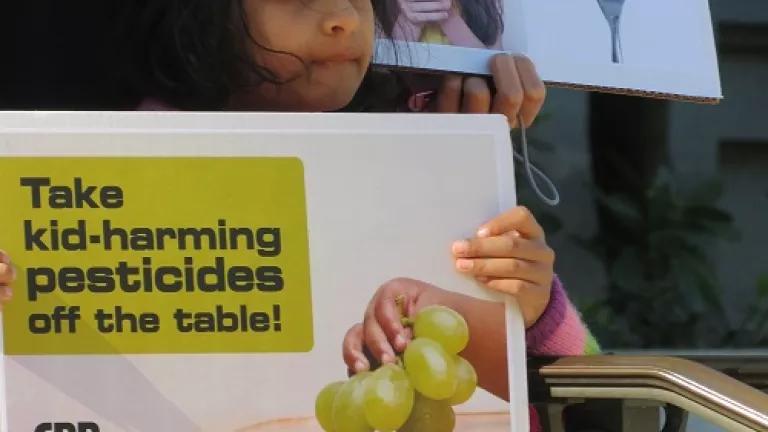
On March 13 in Sacramento, Dr. Irva Hertz-Picciotto from the UC Davis MIND Institute spoke at an informational briefing on how a class of pesticides called organophosphates can impair both thinking and behavioral aspects of children’s brain development. Organophosphate exposures during pregnancy can be especially damaging because a fetus’ developing nervous system is uniquely vulnerable. Prenatal exposures are associated with negative impacts on a child’s learning, reasoning and memory as well as problems with attention, focus and impulse control. Chlorpyrifos - one of the most widely used organophosphate pesticides – has been linked with these harmful effects in animal studies and in people.
Earlier that morning, residents of the agricultural San Joaquin Valley spoke at a press conference about chlorpyrifos in their community. Irma Medellín, Executive Director of El Quinto Sol de America, described how when pesticides are being applied to neighboring fields, the chemicals waft onto school yards, playgrounds, residential yards, and gardens. Residents can see, smell, and even taste the agrochemicals as they drift off the fields and onto people’s property.
At right: A young child holds a sign at the press conference. (Photo credit: Stephanie Tidwell, Californians for Pesticide Reform)
Chemical monitoring provided evidence that chlorpyrifos was contaminating the community’s air, and even ending up in bodies of residents (as measured by chemical metabolites in the urine). In some cases, levels in air exceeded government “Levels of Concern,” where serious and immediate health effects may occur.
On the same day, The Nation published an article telling the story of UC Berkeley scientists, farm workers in California’s Salinas Valley, and the “CHAMACOS” studies which documented how prenatal exposures to chlorpyrifos and other organophosphates can harm children. While these studies focused on women and children in agriculture-intensive communities, other evidence indicates that families outside such areas are also at risk:
“Although the CHAMACOS mothers harbored higher levels of pesticide metabolites than most Americans, there were still “substantial” overlaps, says [Dr. Brenda] Eskenazi [Professor, UC Berkeley School of Public Health]. A 2005 biomonitoring study by the Centers for Disease Control and Prevention [CDC] found that about 25 percent of pregnant women harbored pesticide concentrations higher than the median levels measured in the CHAMACOS mothers. The CHAMACOS children at greatest risk for problems had relatively high prenatal exposures. Still, the overlaps with the general population suggest that “a large percentage of US children could be suffering the effects of exposure due to pesticides,” says David Bellinger, an environmental health expert at the Harvard School of Public Health.”

At left: Luis Medellín delivers 12,000 signatures asking for restriction of chlorpyrifos to Cal/EPA . (Photo credit: Stephanie Tidwell, Californians for Pesticide Reform)
This means that chlorpyrifos is like a bomb centered on agricultural communities-- people there are on the front lines of exposure, but all Californians could be suffering from the fallout.
Almost 15 years ago, chlorpyrifos' toxicity to children galvanized public pressure and government action to end residential uses on lawns, gardens, and in homes. It’s time now to finish the job and restrict agricultural uses as well. California’s children deserve the chance to grow up free of the influence of this hazardous and unnecessary pesticide so they can reach their full intellectual potential.
